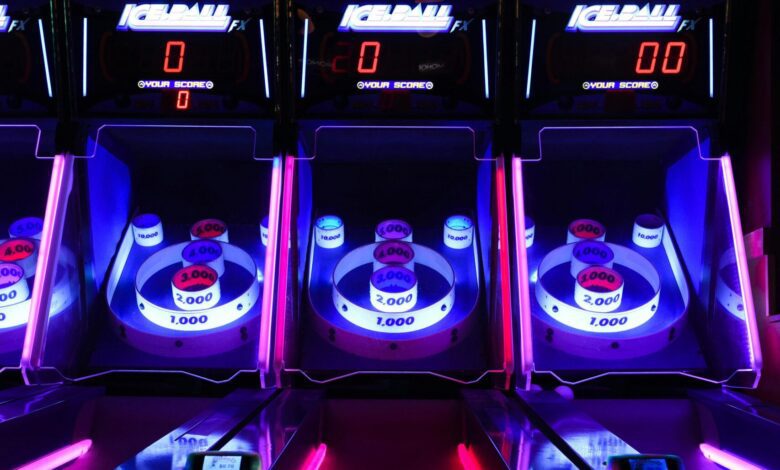Why experiential hospitality is gaining popularity
It’s not just about grabbing a pint anymore – it's about playing a game of shuffleboard while sipping cocktails and sharing that experience with your friends

Trends are beginning to point towards this: people are no longer content with simply dining out or grabbing drinks at their favourite local spot. In today’s world, experiences are king. From competitive socialising bars to immersive event spaces and quirky food halls, the modern consumer is searching for something that goes beyond the basics of food and drink.
This shift in behaviour is transforming the hospitality landscape, and it’s no longer just a trend—it’s the new standard. So why is experiential hospitality gaining so much momentum? To understand this, we need to look at the heart of what’s driving the change: the desire for more meaningful social interactions that create memories and value for money.
Dining is now about the experience
For decades, going out to eat or drink was a simple equation – good food, good company, maybe a nice atmosphere, and you had a winning formula. But the modern diner (especially younger generations) is looking for something more. It’s no longer enough to provide a well-cooked meal or a well-mixed cocktail. Consumers now crave experiences that are interactive, engaging, and above all, memorable.
Take competitive socialising, for example. According to research from CGA by NIQ, 35% of consumers who engage in activities like darts, arcade sports or indoor golf do so weekly. In fact, 60% of people are more likely to visit a bar or pub if it offers these sorts of games. Venues like Flight Club and Electric Shuffle have tapped into this hunger for entertainment, seamlessly blending traditional bar culture with high-tech, competitive games. It’s not just about grabbing a pint anymore – it’s about playing a game of shuffleboard while sipping cocktails and sharing that experience with your friends. These venues provide an immersive atmosphere that’s fun, dynamic and shareable.
The social media effect
One of the major drivers behind this shift is the rise of social media; we live in an age where experiences are often curated for Instagram, Facebook, and TikTok. Every night out is an opportunity to create content, and venues that understand this are flourishing. People want to document their lives, and in doing so, they turn to places that offer them something worthy of sharing.
Whether it’s the quirky design of a food hall like BoxPark, the novel concept of playing ping pong at The Bat and Ball, or TopGolf’s tech-infused take on a traditional driving range, experiential venues create moments that beg to be shared. And for hospitality operators, this user-generated content is a gold mine of free, authentic marketing. Every photo, every story, every tagged location is a recommendation broadcasted to an audience of friends and followers.
Millennials, in particular, are driving this change. Research from Mintel has revealed that over half of millennials seek out new experiences when choosing where to eat, and more than 20% believe bars should offer activities to make their nights out more engaging. It’s no wonder we’re seeing more and more venues focusing on delivering experiences that transcend the plate.
The emotional connection
It’s not just about the novelty, though. Experiential hospitality taps into something deeper: the need for emotional connection. In a world that often feels increasingly disconnected – where more of us are working remotely and digital communication has replaced many face-to-face interactions – going out is now an opportunity to reconnect. Whether it’s through friendly competition or shared experiences at an immersive event, these venues provide a space for meaningful social engagement.
In addition to this, value for money is now tied to the quality of the experience as much as the quality of the food. Consumers are happy to pay a premium if they feel they are getting more than just a meal or drink – they want to leave with a memory, an experience they can talk about later. This is why events like live music, ticketed gatherings and even augmented reality (AR) menus are becoming increasingly popular. In fact, 25% of young adults say that AR technology would enhance their dining experience.
Experiential hospitality is here to stay
Some might have viewed experiential venues as a temporary fad, but the data tells a different story. The surge in popularity of competitive socialising, food halls and multi-use spaces shows no sign of slowing down. This trend has been accelerated by a number of factors: a rise in stay-at-home dining options, a craving for social interaction after periods of isolation, and a consumer base that values experiences over material goods.
In fact, according to CGA’s research, 40% of consumers who attend ticketed events also visit venues with bars or event spaces weekly. This shows that experiential venues are becoming a regular part of people’s social lives, not just a novelty they turn to once in a while.
For operators, this is both a challenge and an opportunity. It means rethinking how spaces are designed, how menus are crafted, and how entertainment is integrated into the overall experience. The good news is that, when done right, these experiences can increase foot traffic, encourage longer stays, and ultimately, boost spending.
As the hospitality industry continues to evolve, it’s clear that the future is experiential. The days of simply offering good food and drink are behind us. Today’s consumers want to be entertained, engaged and emotionally connected to the places they visit. They want to feel that their money is being spent on something meaningful, something they can share with friends, and something they’ll remember long after they leave.
For those in the industry, the message is clear: it’s time to think beyond the plate, and start thinking about how to offer the kind of experiences that will keep guests coming back for more.






